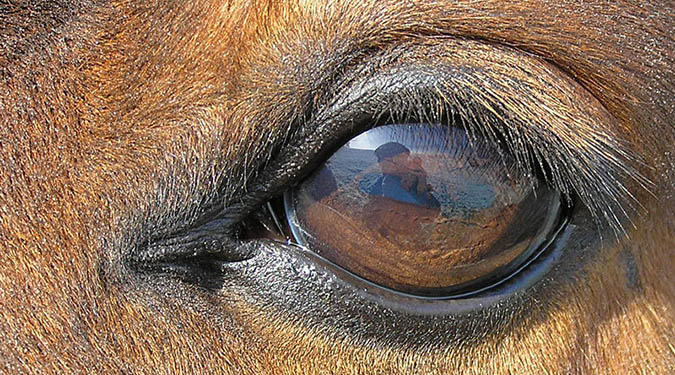Therapy riding - Horseback riding is therapy for body and mind
Therapy riding - Horseback riding is therapy for body and mind!
Written by: Physiotherapist Ane Camilla Kveseth, authorized equestrian physiotherapist and further training in interdisciplinary pain management. Practices therapeutic riding / equestrian physiotherapy in Elverum.
Using the horse's movements in treatment is underestimated and is mainly used only for those with major physical and/or mental disabilities. Horse riding is a good form of treatment for far more people than this. Horses provide mastery, enjoyment of life and increased function.
"- We at Vondtklinikkene - interdisciplinary health (see clinic overview). here ) thanks Ane Camille Kveseth for this guest post. Please contact us if you also wish to contribute with a guest post."
- Important link towards body awareness
Horseback riding is a low-dose and gentle activity that provides a regular rhythmic movement in the back of the spine, stimulates mid-posture, increased stability and balance and is therefore also an important link to body awareness. In addition to those with physical and / or mental disabilities, people with chronic back pain, nonspecific pain diagnoses, fatigue diagnoses, balance problems and mental health challenges may respond well to treatment using horses and their movements.
What is therapy riding?
Therapy riding, or equestrian physiotherapy as the Norwegian Physiotherapist Association (NFF) calls it, is a method where the physiotherapist uses the horse's movements as the basis of the treatment. The horse's movements are particularly beneficial for training balance, strengthening muscles, symmetrical muscle work and coordination (NFF, 2015). Therapeutic riding is a light-based form of physiotherapy treatment, which makes this form of therapy unique. Horse riding is a form of treatment that is fun, and something the riders look forward to. Therapeutic riding is practiced today all over the world also as a valuable form of treatment in somatic and psychiatric treatment.
What is so unique about the horse's movements?
Riding as body awareness and towards movement quality
The horse's movement in paced steps stimulates the whole person to active participation (Trætberg, 2006). The horse has a three-dimensional movement that is very similar to the movements in the pelvis of man during walking. The movement of the horse affects the rider forwards and backwards and provides a tilt of the pelvis, as well as side to side with a rotation of the trunk (see movie). Riding promotes mobilization of the pelvis, lumbar columnar and hip joints and the development of more symmetrically controlled head and trunk positions. It is the variations in the horse's gait, speed and direction that stimulate the upright posture (MacPhail et al. 1998).
Repetitive and long-term treatment is beneficial for motor learning. In a riding session of 30-40 minutes, the rider experiences 3-4000 repetitions from the three-dimensional movement of the horse. The rider learns to respond from the rhythmic movements that will challenge stability in the trunk and provoke postural adjustments. Riding provides contact with deep-seated muscles. The pelvis must move together with the horse's rhythmic movement (Dietze & Neuermann-Cosel-Nebe, 2011). Horseback riding promotes functional movements, flow, rhythm, minimum use of force, free breathing, flexibility and coordination. The rider has a stable center, mobile pelvis, free arms and legs, good axle conditions, contact with the ground and joints in a flexible middle position. The diagnostic movement that occurs during riding is necessary for rotation in the spine and centering of the body (Dietze, 2008).
The effect of riding on stability and balance
Balance, or postural control, is integrated into all functions and results from a complex interaction between sensory information, the musculoskeletal system and modifications from the central nervous system. The postural control arises as a response from internal forces, external disturbances and / or moving surfaces (Carr & Shepherd, 2010). When riding, there are changes in the body's position that stimulate the ability to receive and utilize sensory information and challenge postural adjustments such as reactive and proactive control. This is because riding continuously changes the relationship between the rider's Center of Mass (COM) and support surface (Shurtleff & Engsberg 2010, Wheeler 1997, Shumway-Cook & Woolacott 2007). The reactive control is affected by unforeseen changes in ex. pace and direction, while the proactive control is necessary to be able to perform the assumed postural adjustments the movement from the horse provides (Benda et al. 2003, Carr & Shepherd, 2010).
Riding transfer value for walking function
There are three components that must be present for a functional walk; weight shift, static / dynamic movement and a rotational movement (Carr & Shepherd, 2010). Through the horse's three-dimensional gait, all three components will be present in the rider's trunk and pelvis, and will activate muscles in both the trunk and upper and lower extremities. Control in the trunk provides the ability to sit, stand and walk upright, adjust weight change, control movements against the constant force of gravity and change and control body positions for balance and function (Umphred, 2007). If muscles are spastic, or contractures have occurred, this will affect the ability to move (Kisner & Colby, 2007). A relaxation in muscle fibers provides improved conditions for range of motion and Range of Motion (ROM). (Carr & Shepherd, 2010). During riding, there is a regular repetitive activation of the muscles to maintain the sitting position on the horse, and such mobility training results in a change in muscle tone (Østerås & Stensdotter, 2002). It will affect the elasticity, plasticity and viscoelasticity of the tissue (Kisner & Colby, 2007).
summary
Based on what is mentioned above and what the horse's movements affect the rider, this can be transferred to ailments where the above functions are a desire as a result. Thinking that only one riding session produces 3-4000 repetitive movements, this in-house experience in practice supports that riding has a good function against getting loose on high-toned musculature and better joint conditions and posture changes, which is a finding in most with long-term pain problems. Increased body control, improved contact with one's own balance and increased body awareness provide a basis for changing function in a completely different way that no other form of treatment is able to provide in such a short time. Therapy riding is also important for sensory training and motor training as well as for learning and for stimulating concentration and social adjustment (NFF, 2015).
Practical information about therapy riding:
Equestrian physiotherapy is carried out by a physiotherapist who has undergone and passed NFF's course in therapy riding in stages 1 and 2. The equestrian center must be approved by the county doctor, cf. Section 5-22 of the National Peoples Act. If you want to have riding as a treatment method, you must be referred by a doctor, manual therapist or chiropractor. The National Insurance Scheme contributes to 30 treatments a year, and the physiotherapist has the opportunity to demand payment from the patient, which reflects the costs the physiotherapist has (NFF, 2015). For some, this is the entrance gate as a leisure activity or as a sport.
Equestrian Therapy - YouTube Video:
Literature:
- Benda, W., McGibbon, H. N., and Grant, K. (2003). Improvements in muscle symmetry in children with Cerebral Palsy after Equine-Assisted Therapy (Hippotherapy). In: The Journal of Alternative and Complimentary Medicine. 9 (6): 817-825
- Carr, J. and Shepherd, R. (2010). Neurological Rehabilitation - Optimizing Motor Performance. Oxford: Butterworth-Heinemann
- Kisner, C. and Colby, LA (2007). Therapeutic Exercise - Foundations and Techniques. USA: FA Davis Company
- MacPhail, HEA et al. (1998). Trunk postural reactions in children with and without cerebral palsy during therapeutic horseback riding. In: Pediatric Physical Therapy 10 (4): 143-47
- Norwegian Physical Therapy Association (NFF) (2015). Equestrian Physiotherapy - our field of expertise. Retrieved from: https://fysio.no/Forbundsforsiden/Organisasjon/Faggrupper/Ridefysioterapi/Vaart-Fagfelt on 29.11.15.
- Shumway-Cook, A., and Wollacott, MH (2007). Motor Control. Theory and Practical Applications. Baltimore, Maryland: Lippincott Williams & Wilkins
- Shurtleff, T. and Engsberg JR (2010). Changes in Trunk and Head Stability in Children with Cerebral Palsy after Hippotherapy: A Pilot Study. I: Physical & Occupational therapy in pediatrics. 30 (2): 150-163
- Trætberg, E. (2006). Riding as a rehabilitation. Oslo: Achilles publishing house
- Umprhed, DA (2007). Neurological Rehabilitation. St. Louis, Missouri: Mosby Elsevier
- Wheeler, A. (1997). Hippotherapy as a specific treatment: A review of literature. In: Angel BT (ed). Therapeutic riding II, strategies for rehabilitation. Durango, CO: Barbara Engel Therapy Services
- Østerås, H. and Stensdotter AK (2002). Medical training. Oslo: Gyldendal Academic
- Dietze, S. (2008). Balance on horseback: rider's seat. Publisher: Natur & Kultur
- Dietze, S. and Neumann-Cosel-Nebe, I. (2011). Rider and Horse Back-toBack: Establishing a Mobile, Stable Core in the Saddle. Publisher: JAAllen & Co Ltd
 - Feel free to follow the Vondtklinikkene - Interdisciplinary Health at YOUTUBE
- Feel free to follow the Vondtklinikkene - Interdisciplinary Health at YOUTUBE
 - Feel free to follow Vondtklinikkene - Interdisciplinary Health follow Vondt.net at FACEBOOK
- Feel free to follow Vondtklinikkene - Interdisciplinary Health follow Vondt.net at FACEBOOK
Photos: Wikimedia Commons 2.0, Creative Commons, Freemedicalphotos, Freestockphotos and submitted reader contributions.





